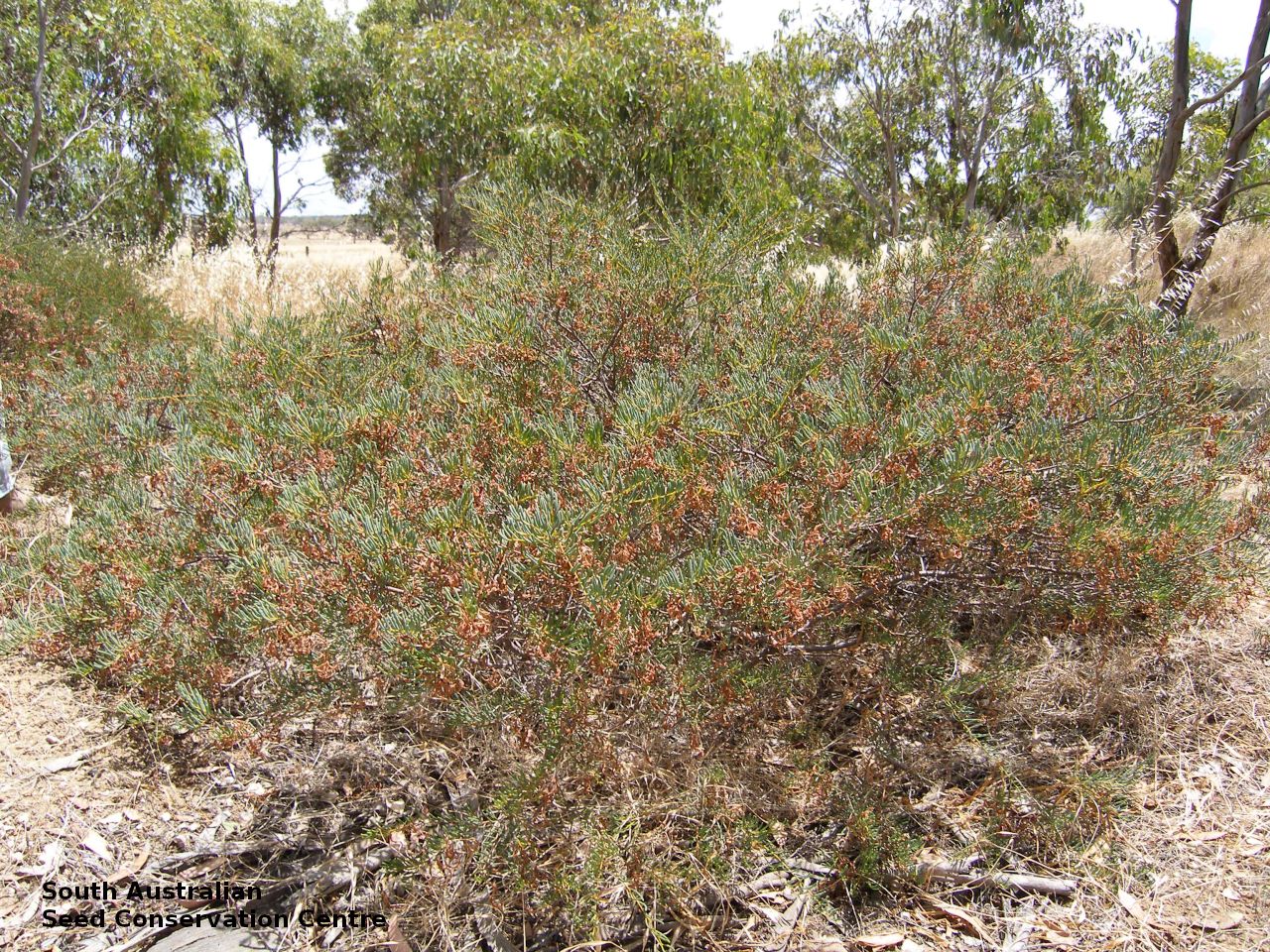
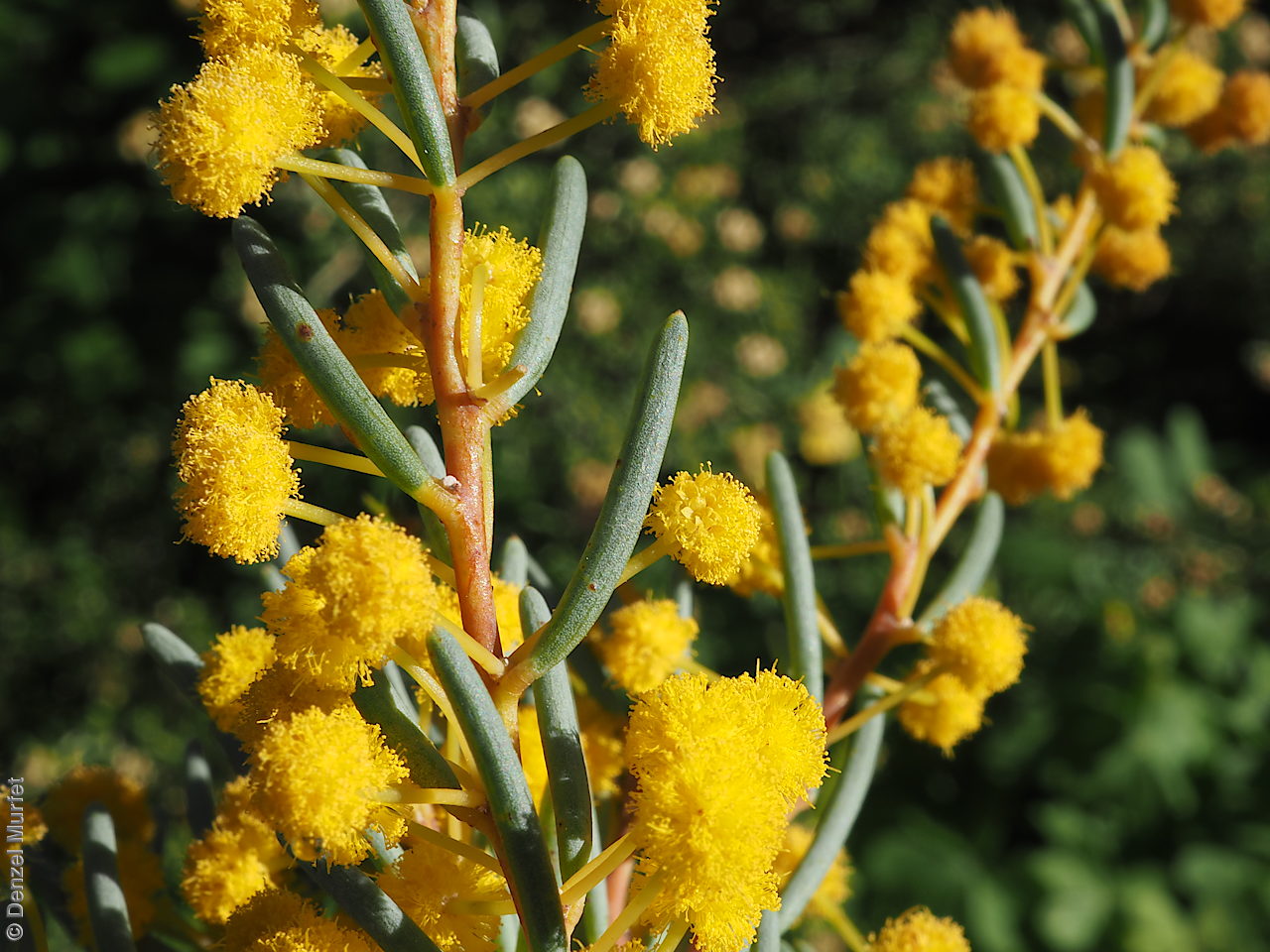
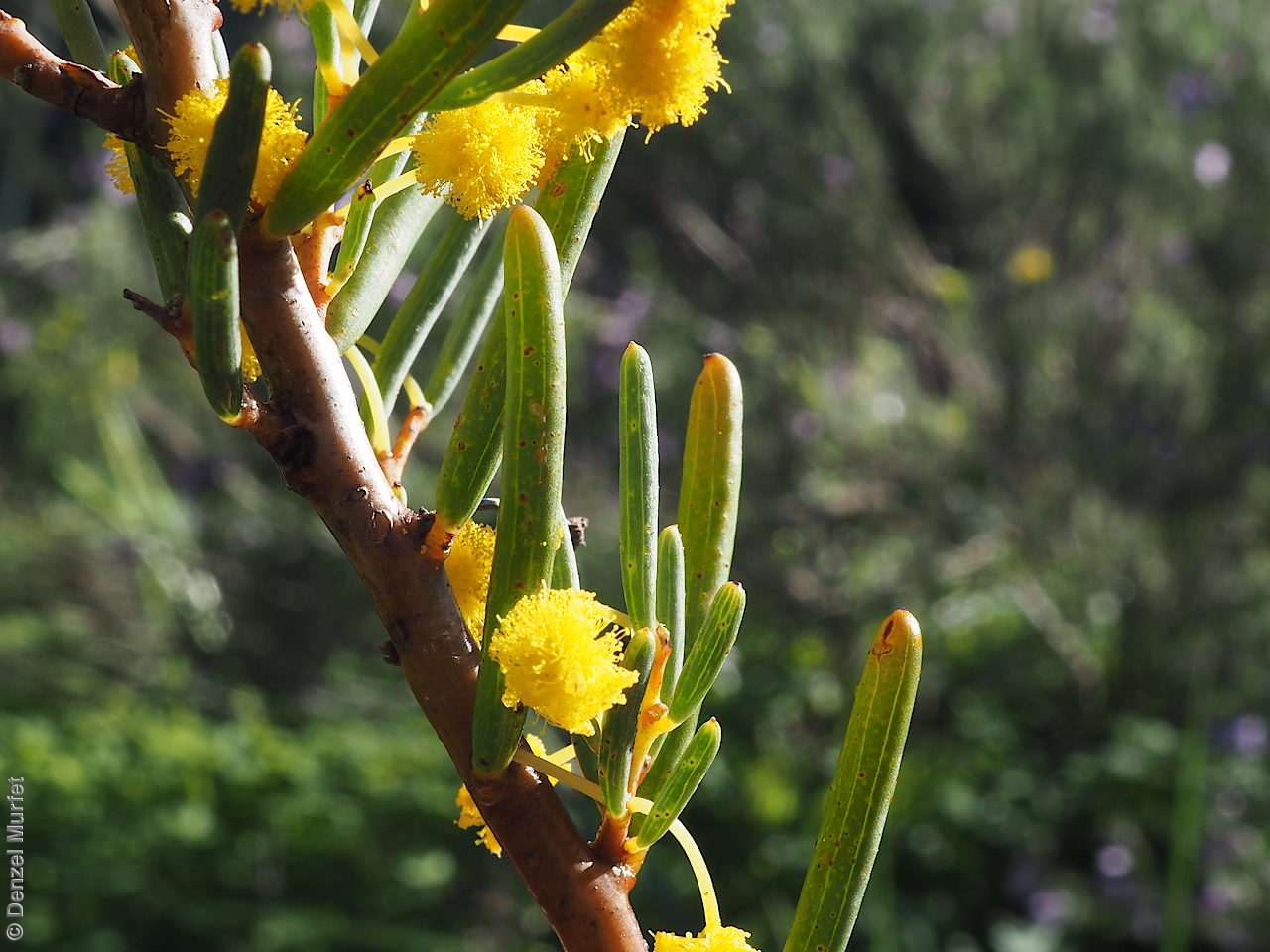
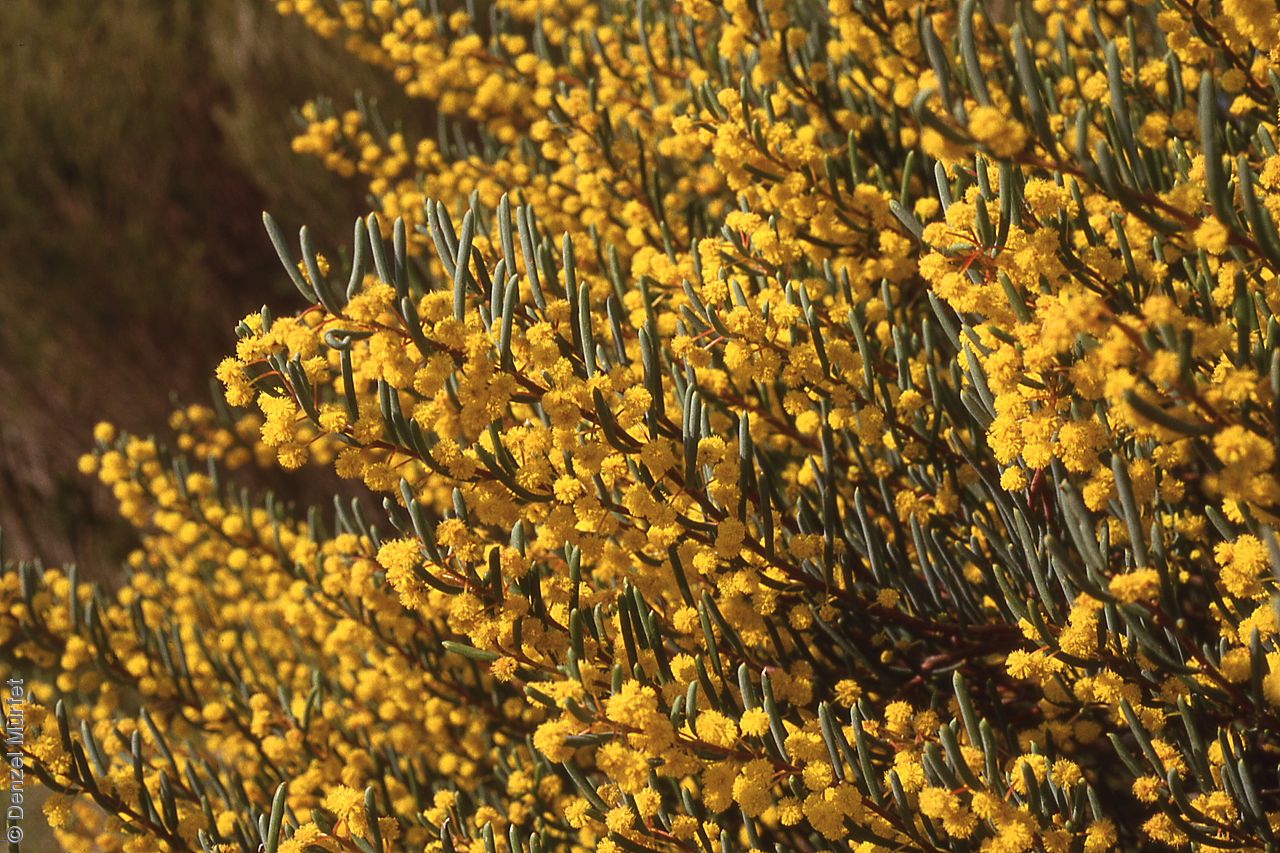
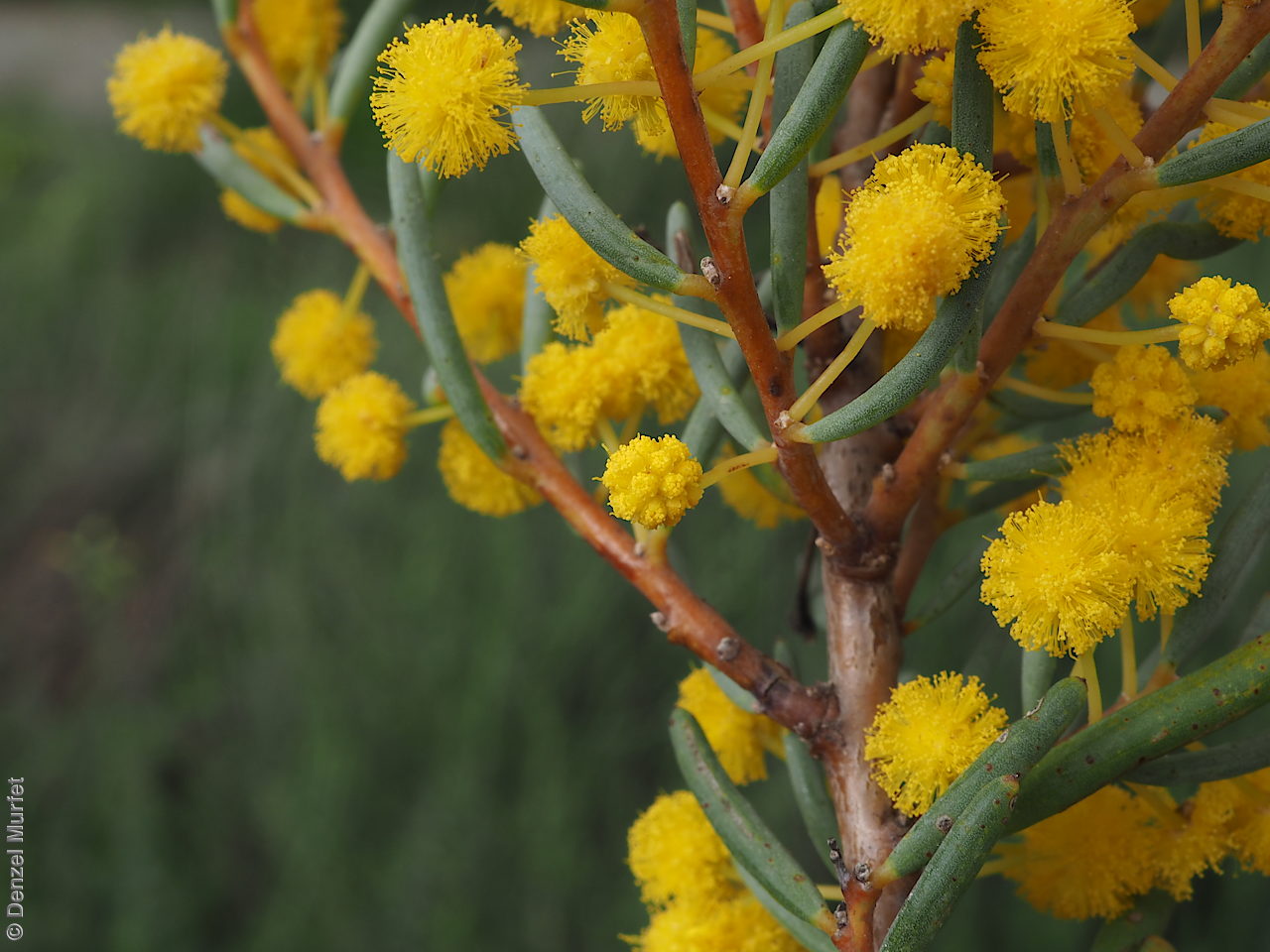
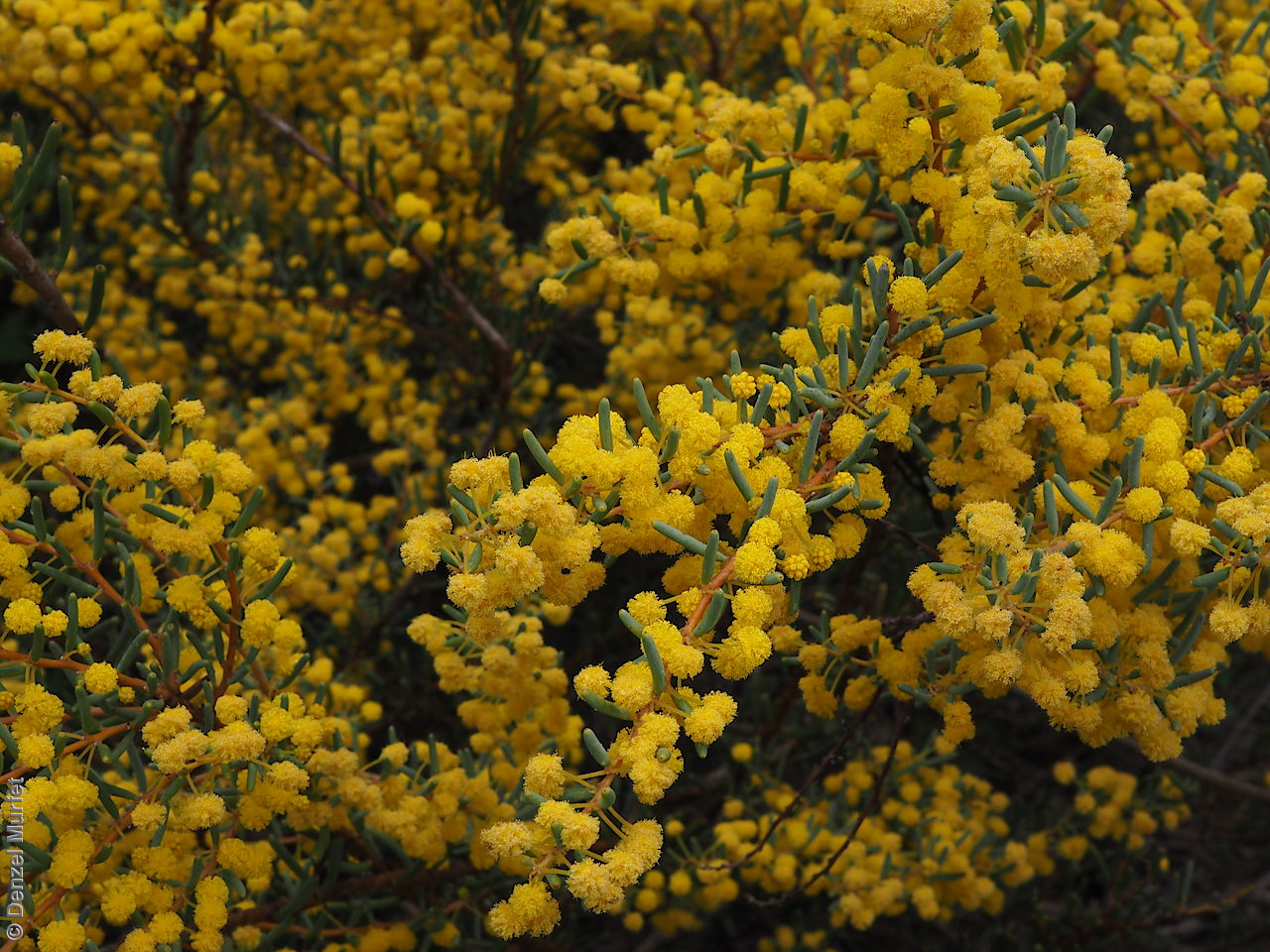
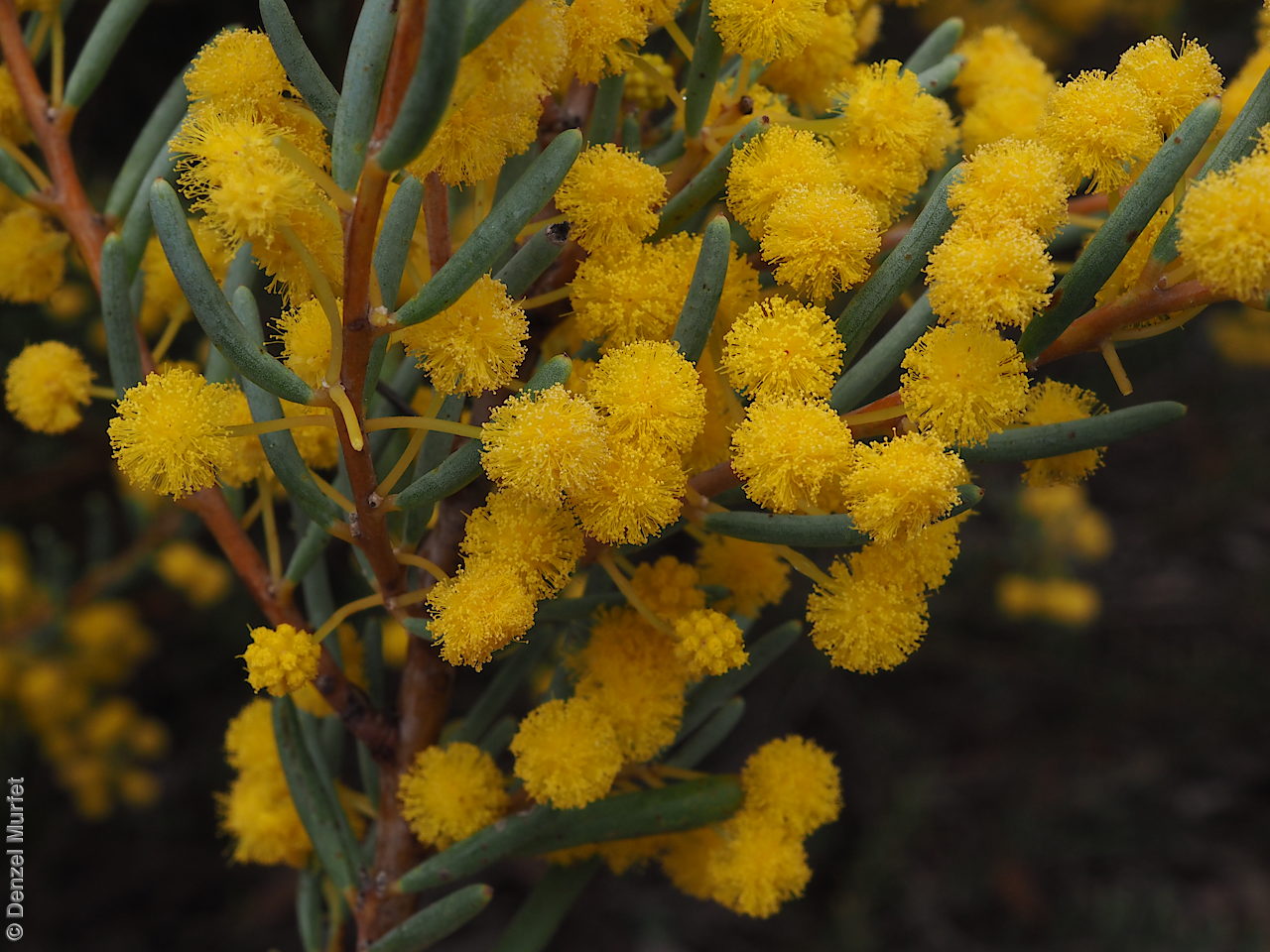
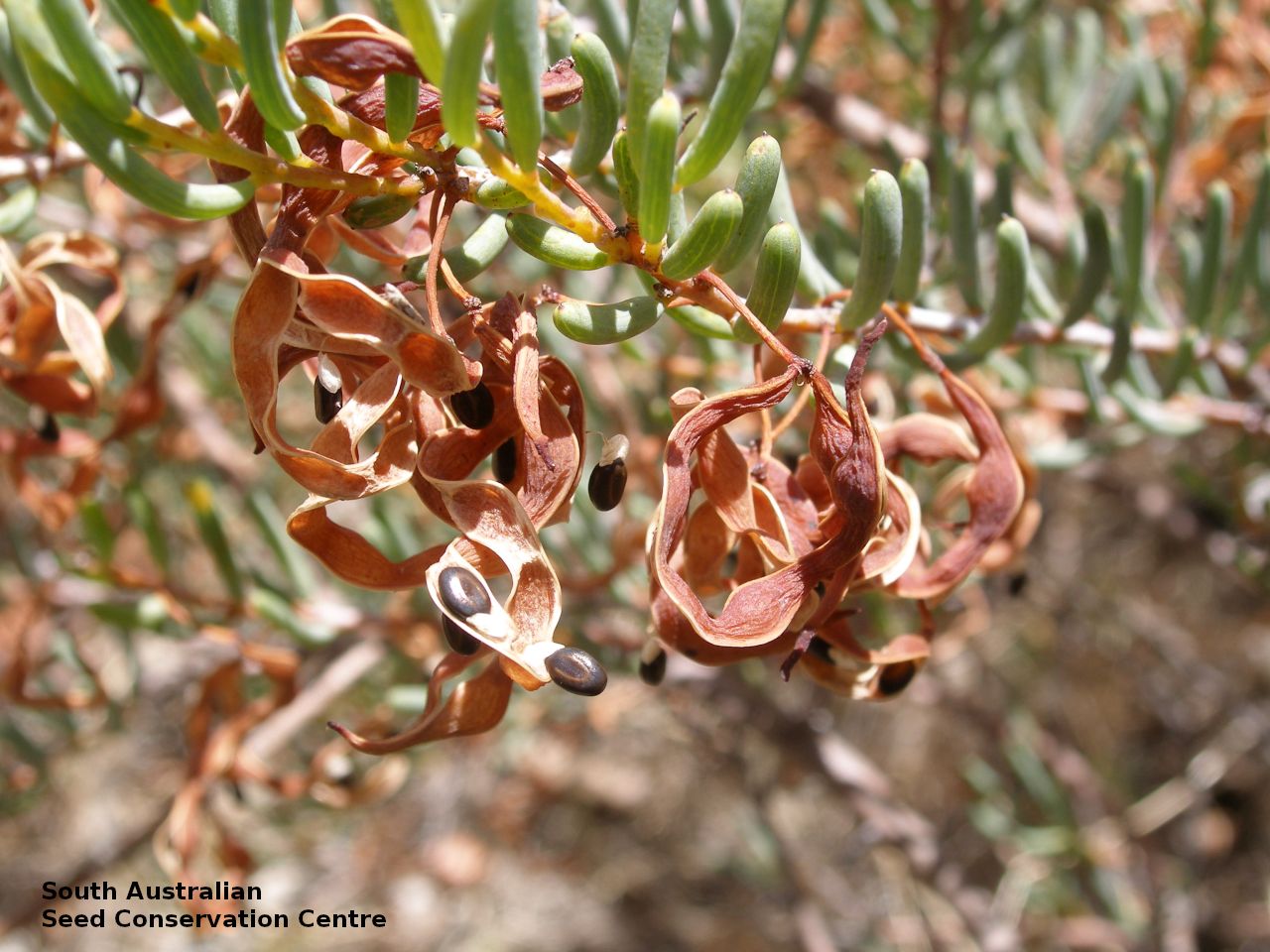
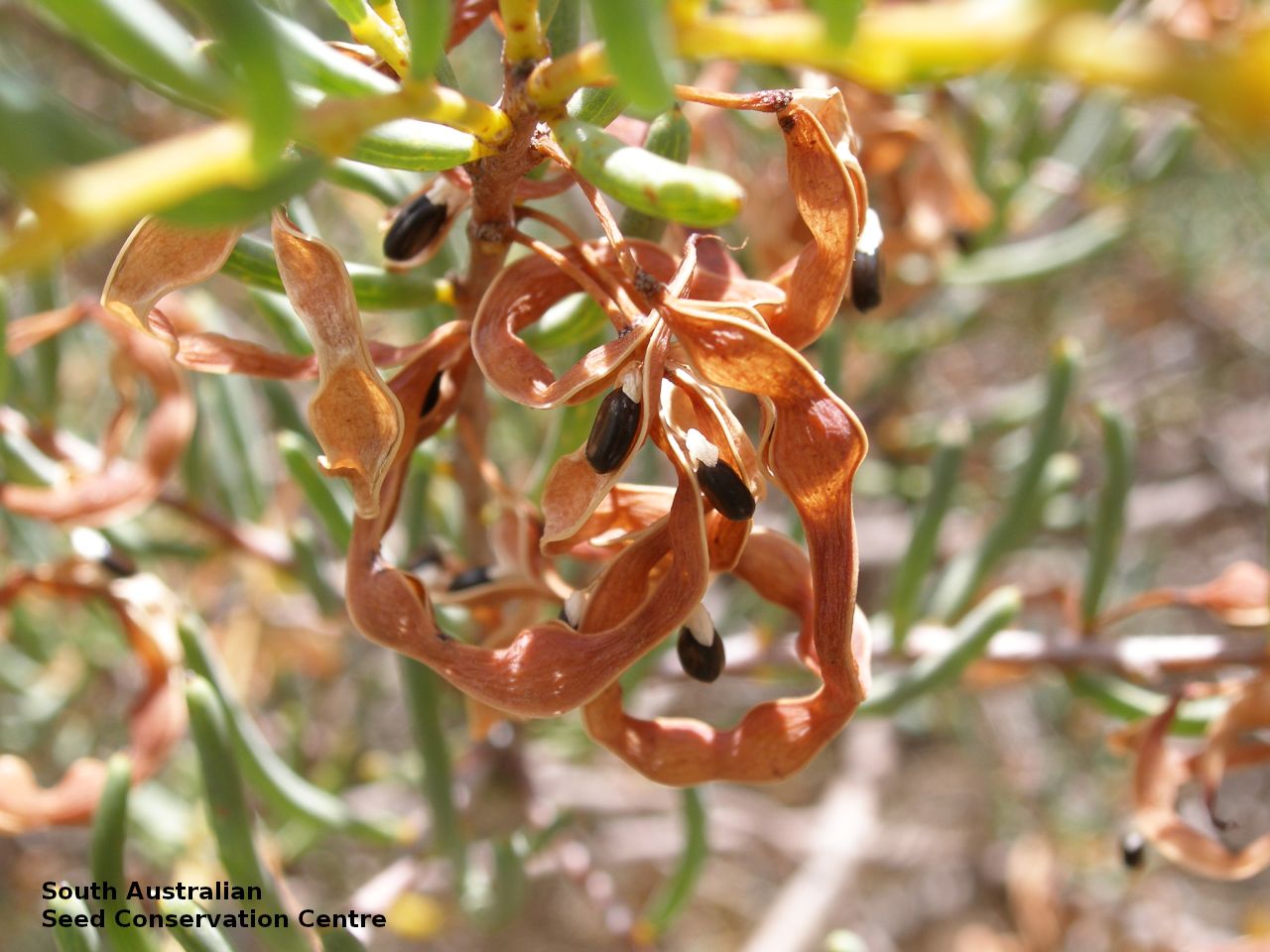
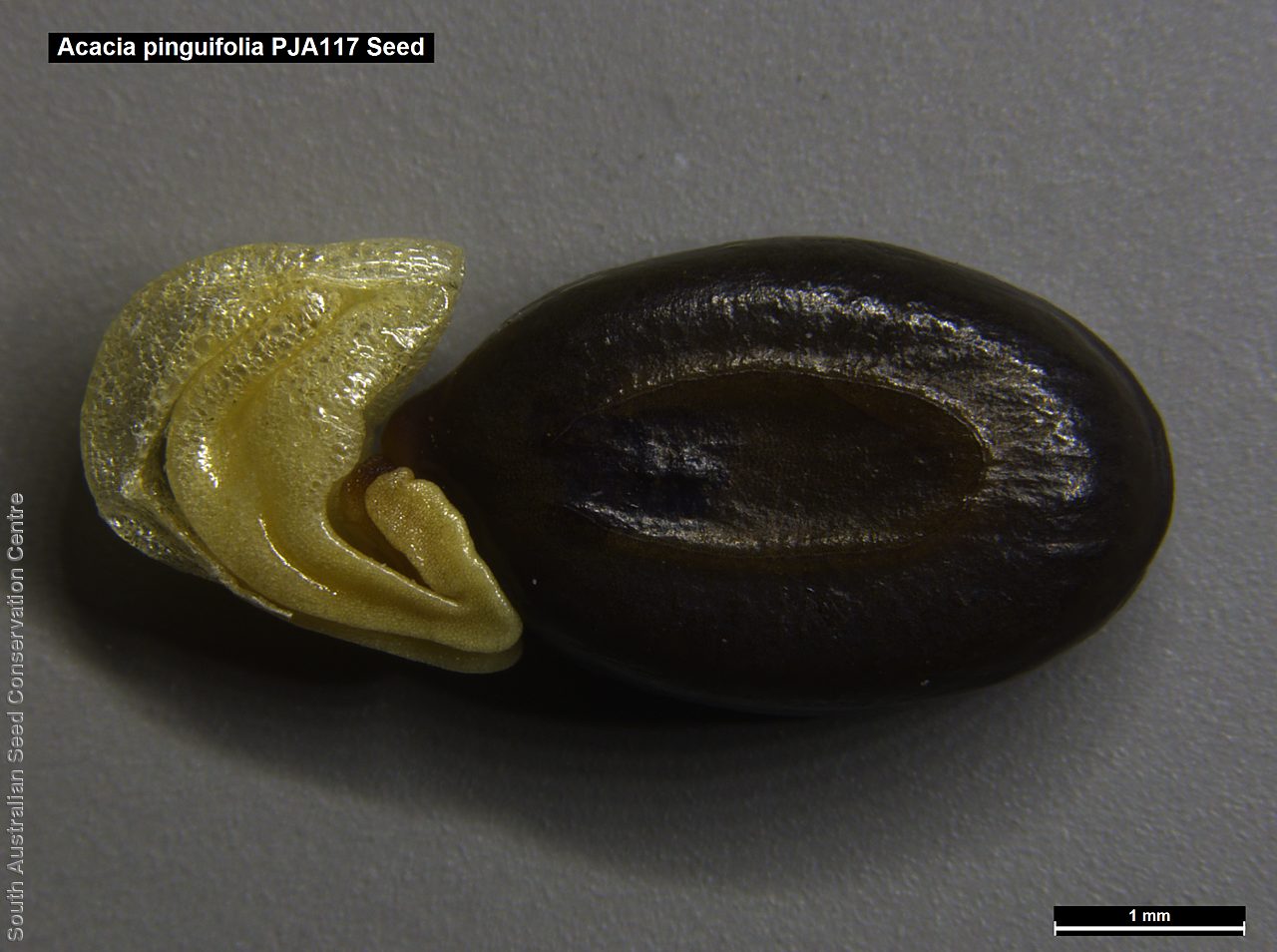
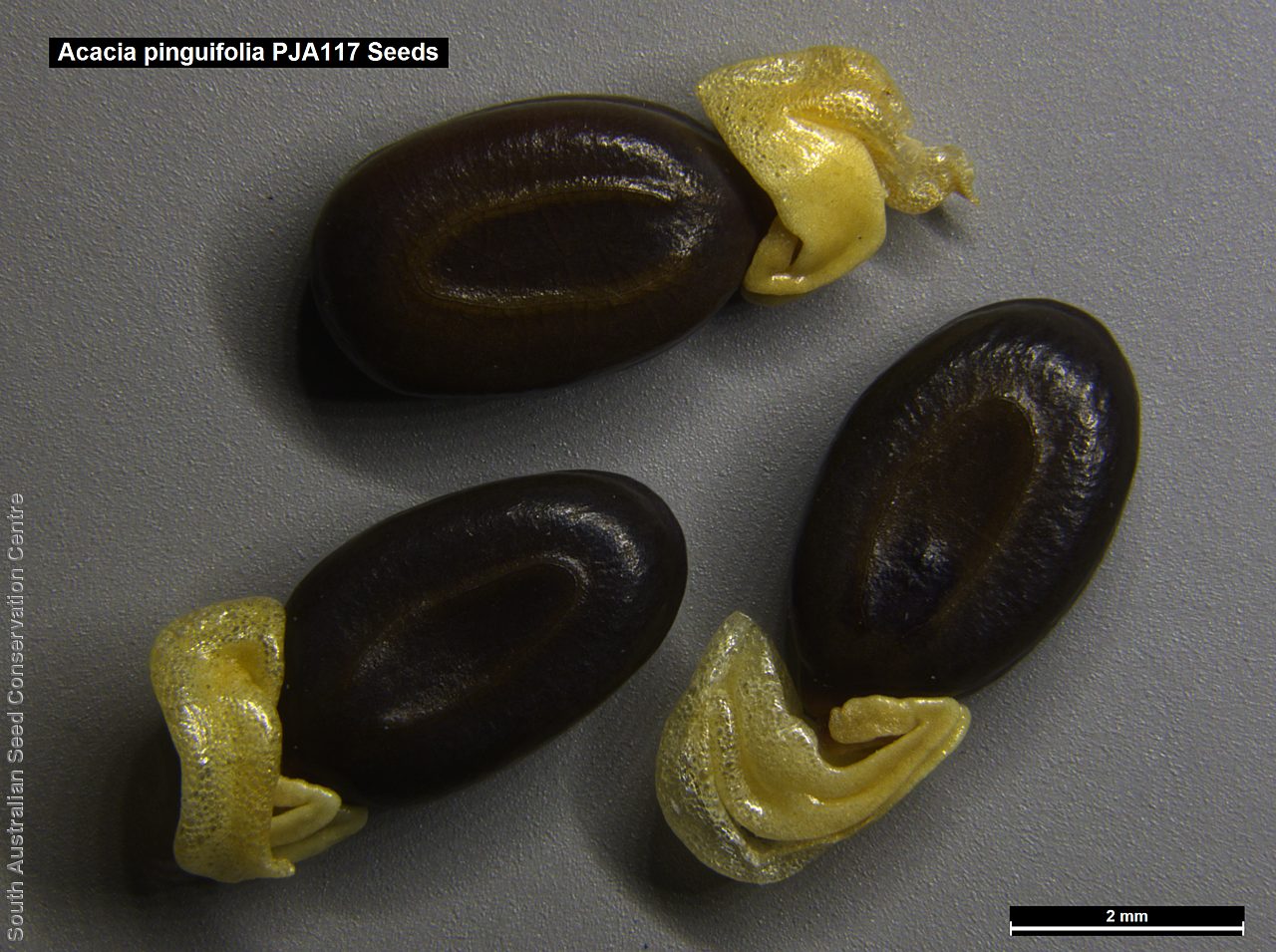
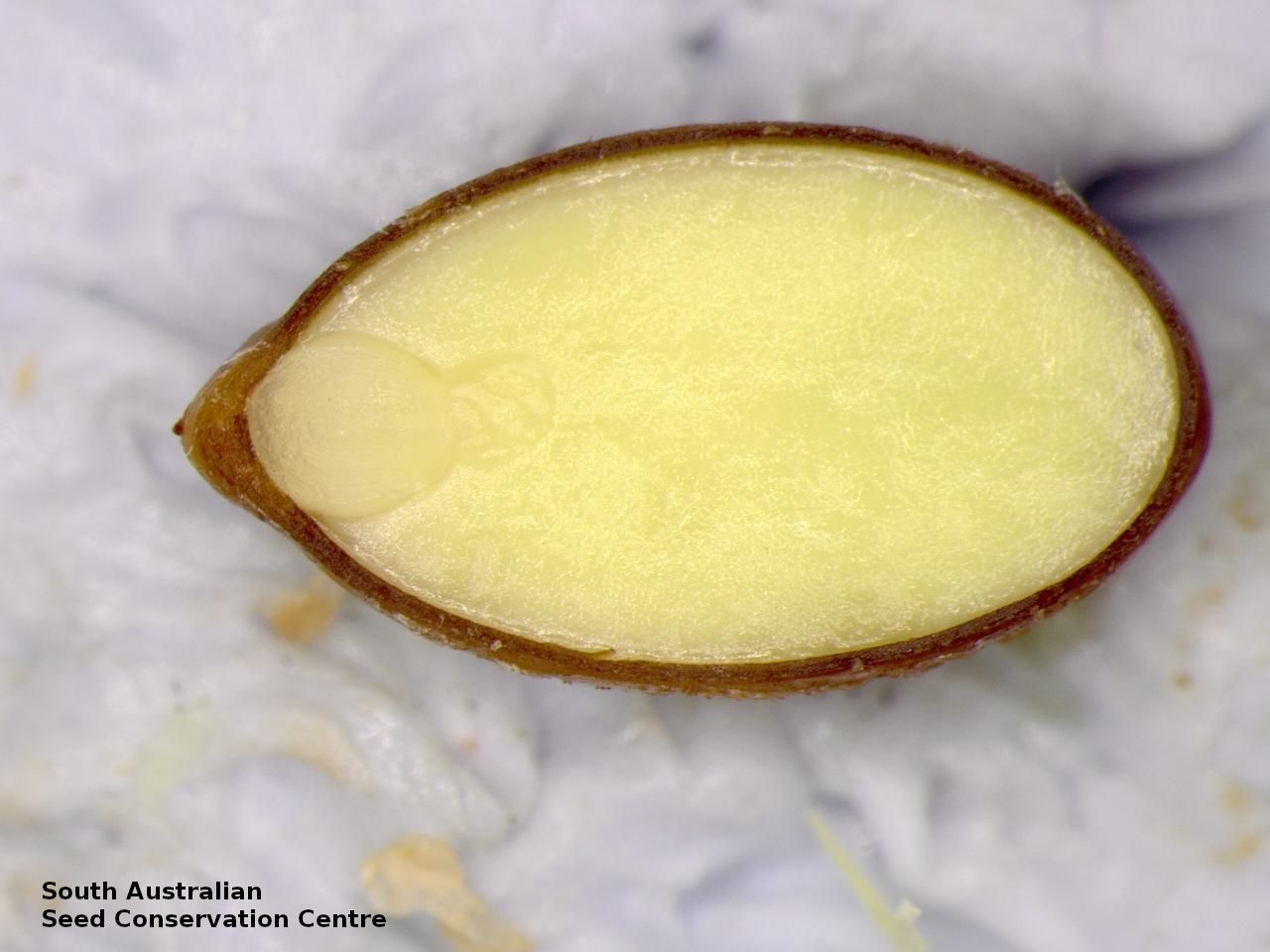
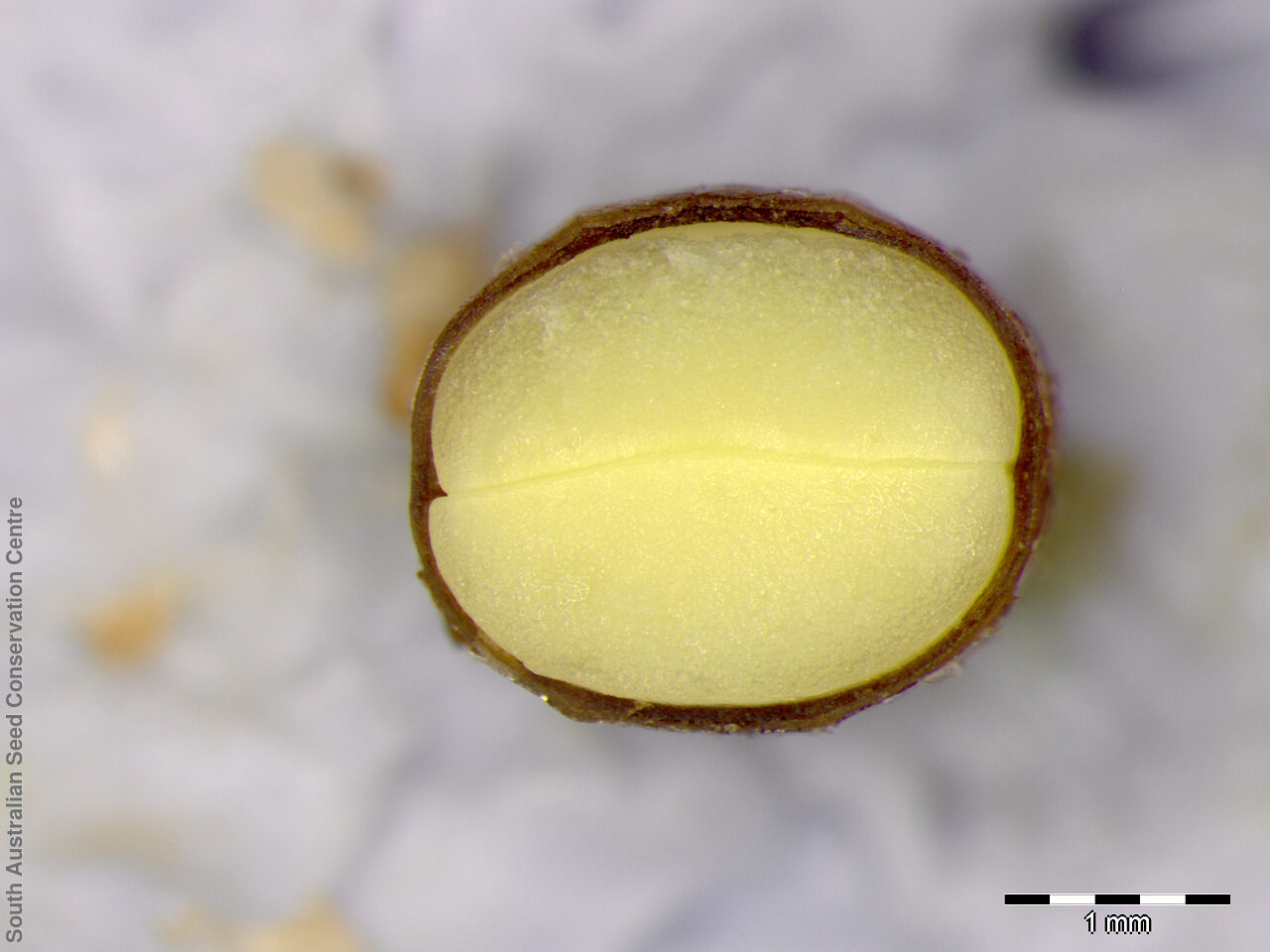

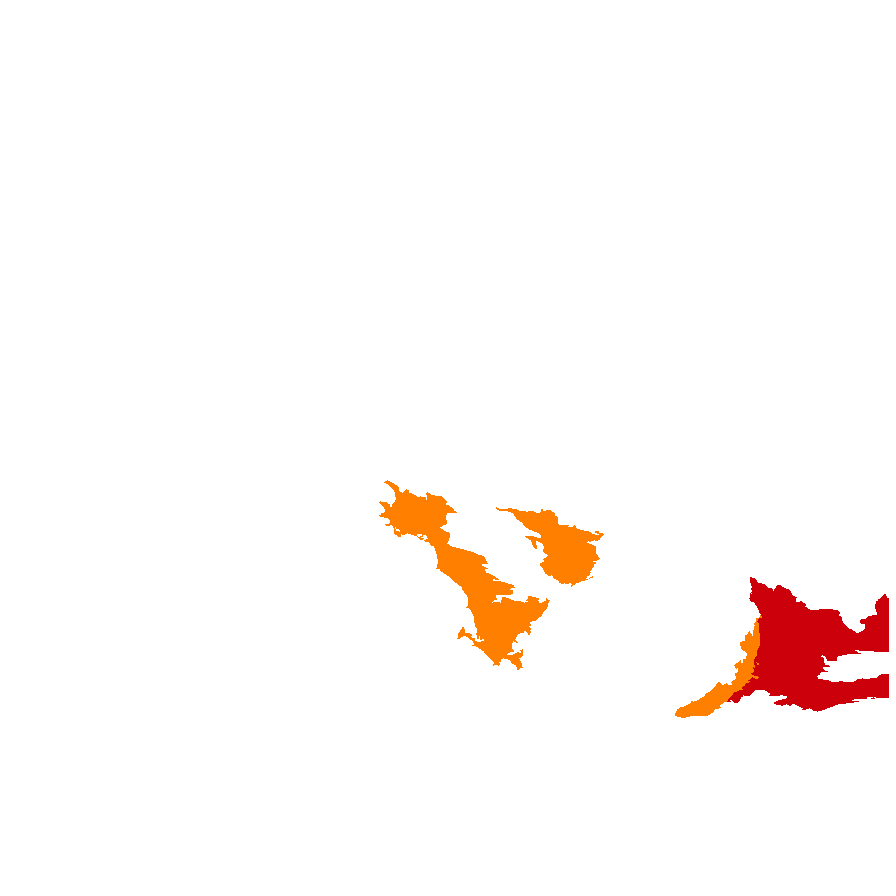
Botanical art
Etymology
Acacia from the Greek 'akakia' and derived from 'ake' or 'akis' meaning a sharp point or thorn and 'akazo' meaning to sharpen. Dioscorides, the Greek physician and botanist used the word in the 1st century AD for the Egyptian thorn tree, Acacia arabica. Pinguifolia from the Latin 'pinguis' meaning fat and 'folium' meaning a leaf, referring to the round fat phyllodes of the species.
Distribution and status
Endemic to South Australia and restricted to southern Eyre Peninsula with a small occurrence in the southern Mount Lofty Ranges near Finniss, growing with Eucalyptus odorata, E. incrassata and Melaleuca uncinata in woodland or open scrub, in mainly sandy or hard alkaline yellow duplex soils. Native. Very rare in South Australia.
Herbarium regions: Eyre Peninsula, Southern Lofty
NRM regions: Adelaide and Mount Lofty Ranges, Eyre Peninsula
AVH map: SA distribution map (external link)
Plant description
Densely spreading shrub to 2 m high and 3 m wide with long round fleshy leaves. Flowers are contained within a single globular yellow ball on a long stalk, appearing in winter and spring. Fruits are long curved pods, twisted to 7 cm long, when fully matured and dried. Seeds are semi-flat ovoid dark brown to black seeds to 5 mm long and 3 mm wide. Seed embryo type is investing.
Seed collection and propagation
Collect seeds between November and January. Collect mature pods when turning brown, with dark brown hard seeds. The pods may still be closed. Place the pods in a tray and leave to dry for 1-2 weeks. Then rub the pods with a rubber bung or by hand to dislodge the seeds from the pods. Use a sieve to separate the unwanted material. Store the seeds with a desiccant such as dried silica beads or dry rice, in an air tight container in a cool and dry place. From seven collections, the seed viability was high, ranging from 80% to 100%. This species has physical dormancy that needs to be overcome for the seed to germinate (e.g. nicking or softening the seed coat).
| Location | No. of seeds (weight grams) | Number of plants | Date collected | Collection number Collection location | Date stored | % Viability | Storage temperature |
|---|---|---|---|---|---|---|---|
| BGA MSB | 13,100 (131.5 g) 13,100 (131.5 g) | 70 | 7-Dec-2004 | DJD71 Eyre Peninsula | 31-Mar-2006 | 100% | -18°C |
| BGA | 7,200 (72.28 g) | 5 | 16-Nov-2005 | PJA117 Southern Lofty | 1-Aug-2006 | 90% | -18°C |
| BGA | 390 (3.85 g) | 16-Dec-2005 | PJA116 Southern Lofty | 1-Aug-2006 | 85% | -18°C | |
| BGA | 970 (9.4 g) | 12 | 22-Dec-2006 | Brimarvi Road Southern Lofty | 1-Aug-2007 | 90% | -18°C |
| BGA | 1,730 (16.31 g) | 5 | 8-Dec-2006 | CSO7 Southern Lofty | 19-Sep-2008 | 80% | -18°C |
| BGA | 2,020 (19.68 g) | 6 | 8-Dec-2006 | CSO8 Southern Lofty | 19-Sep-2008 | 90% | -18°C |
| BGA | 240 (2.94 g) | 3 | 8-Dec-2006 | CSO6 Southern Lofty | 19-Sep-2008 | N/C | -18°C |
| BGA | 6,800 (58.23 g) | 12 | 12-Dec-2008 | DJD1452 Eyre Peninsula | 20-Jul-2009 | 100% | -18°C |
| BGA | 1,900 (20.6 g) | 7-Sep-2005 | D131204SL Southern Lofty | 1-Jan-2016 | 100% | -18°C |
Number of plants: This is the number of plants from which the seeds were collected.
Collection location: The Herbarium of South Australia's region name.
% Viability: Percentage of filled healthy seeds determined by a cut test or x-ray.